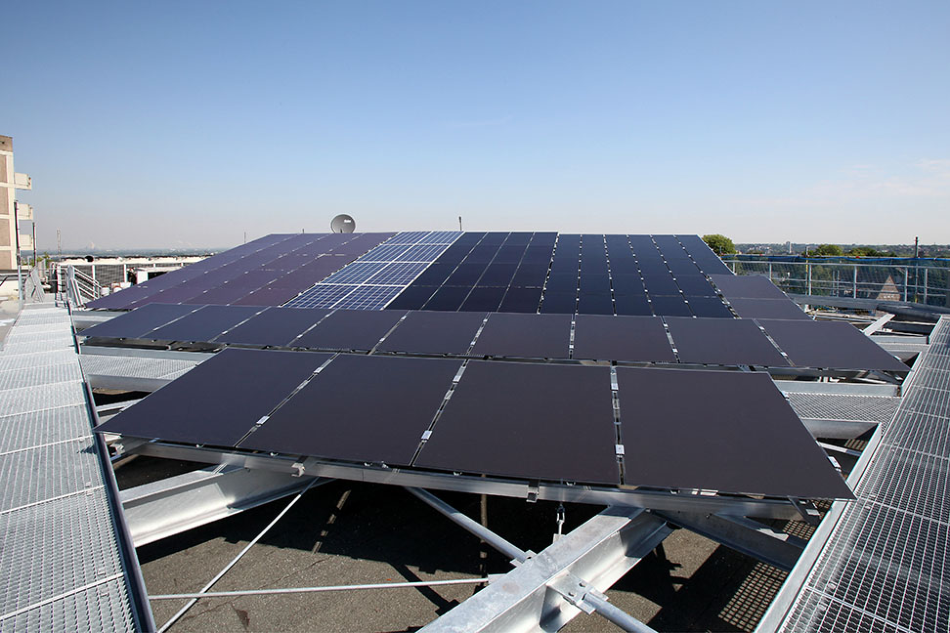Jan 3 2020
Solar panels make use of photovoltaics (PVs) that are susceptible to environmental factors and usually degrade over time. However, field tests are not included in International Electrotechnical Commission standards for expedited degradation.
 The PV field-testing facility located at the Max Planck Institute for Chemical Energy Conversion (MPI-CEC), located in Mülheim an der Ruhr, Germany. The rooftop installation includes five different inorganic PV technologies. Image Credit: Thomas Hobirk, MPI-CEC.
The PV field-testing facility located at the Max Planck Institute for Chemical Energy Conversion (MPI-CEC), located in Mülheim an der Ruhr, Germany. The rooftop installation includes five different inorganic PV technologies. Image Credit: Thomas Hobirk, MPI-CEC.
Although certain testing facilities have provided data, a large part of the data required to make business decisions for PVs is not publicly available.
When solar panels are being tested, the intensity of the Sun, the angle of light, and spectral composition are significant factors to understand why specific solar panels are effective while others tend to degrade more rapidly. In addition, tests should include several parameters apart from just temperature.
Therefore, to fill in the knowledge gap with regard to degradation mechanisms for different types of PVs, scientists conducted tests over a period of five years where they gathered weather data and also data relating to the performance of solar panels. Then, with the help of filtering masks and regression and aggregation algorithms, these data points were processed to figure out the change over time.
The study results have been published in AIP Publishing’s Journal of Renewable and Sustainable Energy.
Our study highlights that one of the proposed methods of tackling this problem, i.e., applying the irradiance mask, might add bias to the data without decreasing the spread. What we were surprised by was that a simple data aggregation to a longer time interval, coupled with the year-on-year method for calculating degradation rates, yielded reasonable results that were validated when the pyranometer data was excluded.
Peter Kraus, Study Author, Max Planck Institute for Chemical Energy Conversion
Solar panel tests were conducted at a PV power plant located at the Max Planck Institute for Chemical Energy Conversion in Mülheim an der Ruhr, Germany. Five inorganic PV technologies were included in the rooftop installation. These include amorphous silicon, polycrystalline silicon, copper-indium-gallium-selenium, cadmium telluride, and micromorph thin-film silicon.
Pyranometers, which are sensors used for quantifying the irradiance of sunlight, tend to malfunction and are error-prone. Hence, it is important to check and calibrate these pyranometers regularly.
The scientists used an open-source testing method, known as clear-sky irradiance, to deal with this issue. Clear-sky irradiance is the estimated solar irradiance at a specified place under optimal clear-sky conditions, and the method was developed by Sun Power Corporation and the National Renewable Energy Laboratory.
The scientists compared the performance ratios of the solar panels based on quantified real-world data and also data that was modeled using clear-sky irradiance to demonstrate the variation between datasets, emphasize inconsistencies in the data, and report precise performance over time.
The study authors have planned to continue to create comprehensive data on the PV plant to widen the dataset over longer durations of time and thus provide raw performance data to the public where it can be utilized to enhance the technology.